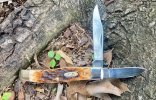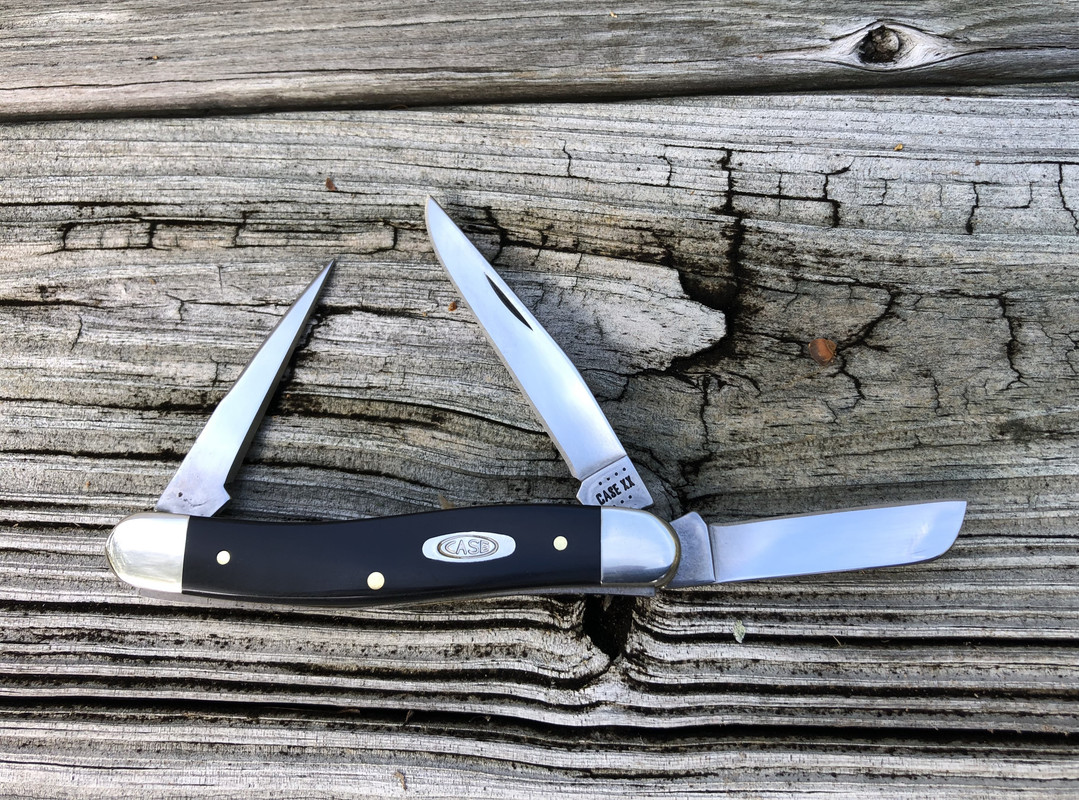From W. R. Case Knives
The Case Edge – Past, Present & Future
February 17, 2022 Share
Throughout more than one hundred years of history, the Case name has become synonymous with reliable blades which are individually honed by the hands of skilled artisans.
During that time, Case has principally used two types of steel to make our blades. These include our original Chrome Vanadium (“CV”), and our stainless option, Tru-Sharp™ surgical steel (“SS”).
In recent months, Case (and most every other American manufacturer) has encountered some disruption in availability of manufacturing materials. While we’ve been able to manage our materials inventory relatively well throughout the pandemic, it has become apparent that supply chain challenges will remain with the industry for a while.
This development has forced us to look at other choices of steel that will meet our own demanding specifications at Case. While we’ve routinely used specialty steels like Damascus, 154-CM, and more recently, S35VN for certain production runs, we recognize there’s been a growing interest in our carbon-based steel products and a need for more reliable and consistent availability. This steel is a favorite among consumers that depend on their knives to withstand the rigors of everyday use, especially in our traditional folders.
Case engineers have diligently worked to ensure the uncompromising quality and durability of our carbon-based steel remains intact, and after careful consideration, deliberation, testing and more testing – it has become clear that 1095 is the best option to add to our steel arsenal.
1095 is nearly identical in composition to our Chrome Vanadium steel, in fact Case’s Chrome Vanadium is a custom blend of 1095 steel. Therefore, both steels closely resemble that which might have been used by the Case Brothers starting from the late 19th century. 1095’s performance throughout the rigors of the manufacturing process, heat treatment, and use in the field has proven it’s worthy to become part of any Case knife.
Like our Chrome Vanadium, our 1095 steel is part of a class of steels where carbon is the principal alloying element that gives the steel high tensile strength, wear resistance and toughness. Both CV and 1095 carbon steel blades are also known for their edge retention and ease of re-sharpening.
Both are just as susceptible to tarnishing and rusting compared to stainless steel when exposed to air and moisture. A thin coat of oil or other suitable waterproof coating will preserve the steel’s original appearance while providing you many years of dependable service.
Soon you’ll be seeing the acronym “CS” on all carbon steel Case blade tangs. No change to our stainless steel lineup is planned.
Overall, choosing between a Case knife with any carbon steel, stainless steel, or other steel is largely one of personal preference. Some feel that edge retention, ease of re-sharpening, and the patina that can be achieved with carbon steel blades makes it superior to stainless steel; others appreciate the added corrosion resistance and dependable performance of stainless.
You can be sure that all Case steels are made to our highest quality standards and, with proper care, can perform well for many years.



